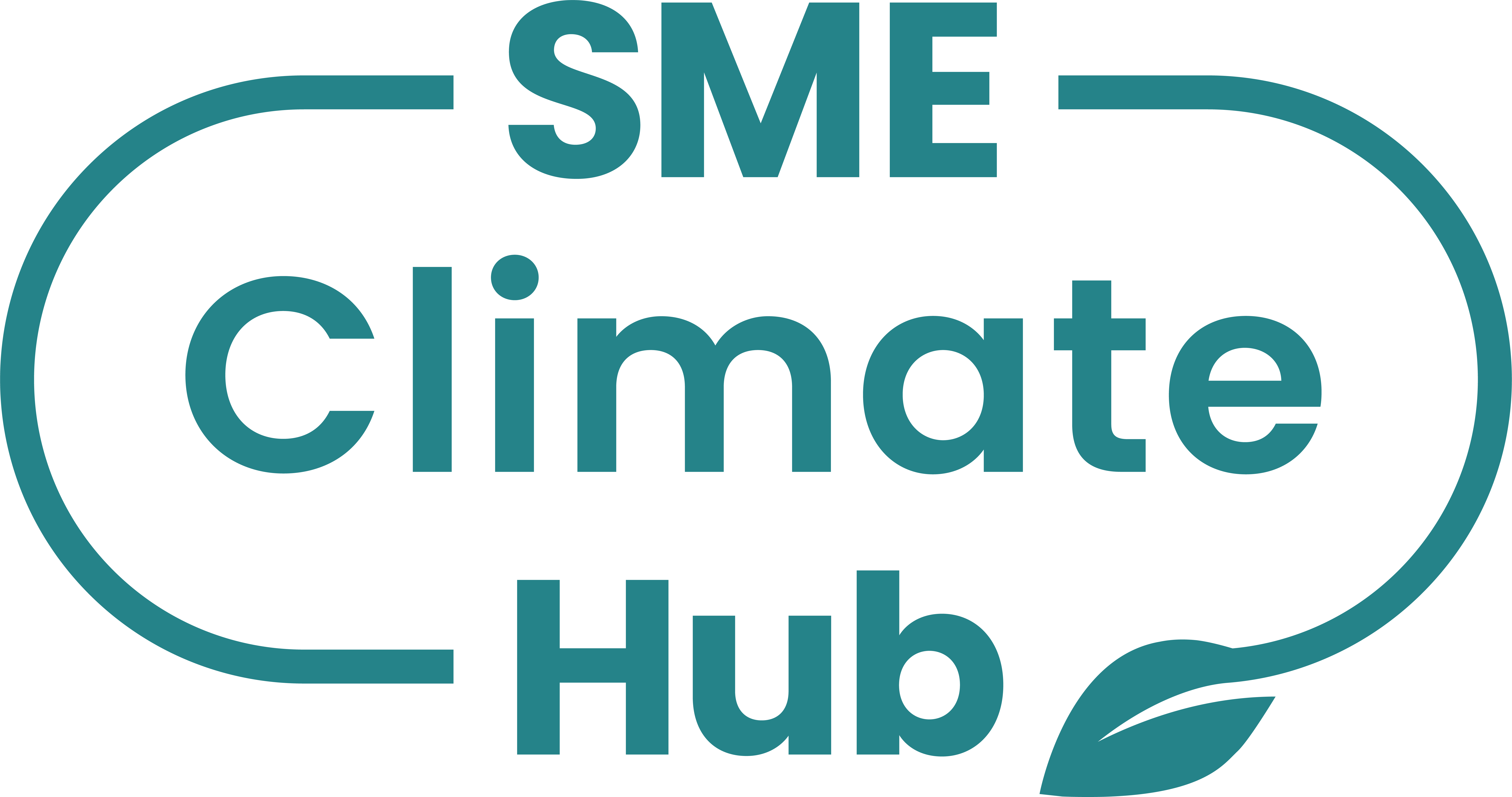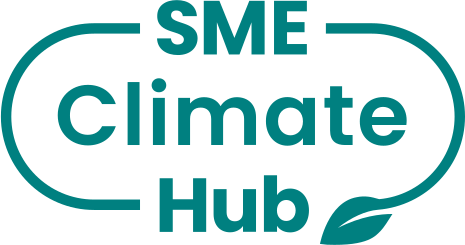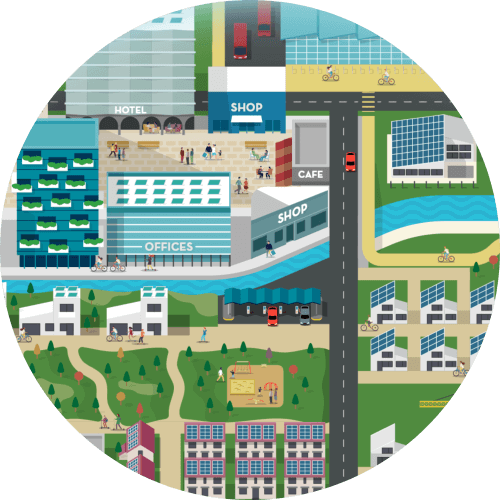Descubre los pasos que puede seguir tu empresa hacia un futuro más sostenible con nuestros recursos gratuitos.
Crystal Doors's Climate Report
Introduction *
Commitment And Targets *
Own emissions *
Value chain emissions *
(optional)Actions and plans to reduce emissions *
Climate Solutions *
(optional)Management and strategy *
(optional)Results, challenges and outlook *
Introduction *
reporting year
*2022
number of employees in the reporting year
*21
Commitment And Targets *
net zero target year
*2050
Base year
*2019
comment on your net zero targets
*Crystal Doors intends to achieve net zero for scopes 1 and 2 by 2030 (based on the market-based allocation method for scope 2). Overall, we aim to at least halve our total value chain emissions by 2030 and will aim for net zero across all scopes as soon after as possible.
near-term scope 1 target
*79
target year
*2030
near-term scope 2 target
*100
target year
*2023
near-term scope 3 target
*42
target year
*2030
comment on your near-term targets
*Crystal Doors' near-term targets have been calculated with the Science Based Targets initiative's target setting tool and are aligned with the maximum ambition 1.5C global warming scenario. Our scope 1 target is based on going further by achieving net zero (90% absolute reduction) across scopes 1 and 2 by 2030, based on the market-based method for scope 2. We will continue to report our scope 2 location-based emissions as well, which provides an important incentive to continually improve our energy efficiency.
Own emissions *
scope 1 emissions
scope 1 emissions (metric tons co2e)
*56
own facilities
*16
metric tons CO2eown vehicles
*40
metric tons CO2eown processes
*N/A
scope 2 emissions
scope 2 emissions (metric tons co2e)
*80
total energy consumption (kwh)
*416260
renewable energy
*100
purchased electricity
*0
Renewable electricity (%)
100
purchased steam
*N/A
Renewable electricity (%)
-
purchased heating
*N/A
Renewable electricity (%)
-
purchased cooling
*N/A
Renewable electricity (%)
-
Comment on your energy consumption
*Crystal Doors' location-based scope 2 emissions total 80tCO2e. We generate a substantial portion of our electricity from our 245kW rooftop solar panel system. The remaining power we draw from the grid is supplied via SSE's Next Generation tariff, which provides 100% renewable electricity traced to one of SSE's UK wind farms. Therefore our market-based scope 2 emissions are zero. Crystal Doors' heating is provided on-site via a biomass burner, fed entirely by MDF waste from the production process. Emissions from the biomass burner are estimated based on the weight of material burnt each year. We use the DEFRA GHG conversion factor for wood chips in the absence of a specific conversion factor for our material.
Value chain emissions (optional) *
scope 3 emissions
scope 3 emissions (metric tons co2e)
*444
supply chain related - upstream emissions
purchased goods and services
*370
metric tons CO2ecapital goods
*Not measured
fuel and energy related activities
*38
metric tons CO2etransportation and distribution (upstream)
*16
metric tons CO2ewaste in operations
*2
metric tons CO2ebusiness travel
*3
metric tons CO2eemployee commuting
*7
metric tons CO2eleased assets (upstream)
*N/A
customer related - downstream emissions
transportation and distribution (downstream)
*Not measured
processing of sold products
*Not measured
use of sold products
*N/A
end-of-life treatment of products
*8
metric tons CO2eleased assets (downstream)
*N/A
franchises
*N/A
investments
*N/A
List any sources of emissions excluded:
*We have excluded capital goods because it is currently difficult to calculate emissions from this source. We have also attempted to measure as many purchased goods and services as possible, using a mixture of the Normative carbon calculator estimator (using £ spent) and, where possible, more accurate conversion factors for core raw materials. In total, around 78% of total expenditure by £ spent is included in our calculations - the remainder are expense categories that are not measured by the Normative tool.
describe the calculation methodology and comment on accuracy:
*We use a mixture of the Normative carbon calculator estimator (using £ spent) and, where possible, more accurate conversion factors based on real data. The two biggest raw materials are MDF and PVC vinyl foil, which represent approximately 60% of non-salary expenditure. For MDF we use a lifecycle analysis carbon figure provided by the manufacturer. For vinyl we currently use the DEFRA GHG conversion factor for PVC plastic. Fuel and energy-related activities, waste in operations, water (not reported above), employee commuting and end-of-life disposal are calculated using DEFRA GHG conversion factors. The remaining reported sources (other purchased goods and services and upstream/downstream transportation) are estimated using the Normative tool. We use a traffic light system to track our confidence levels in each category and attempt to improve data accuracy and methodology every year (with any methodology changes backdated to previous years where possible).
Actions and plans to reduce emissions *
Scope 1 Actions
own facilities
Yes
We are investigating our options for how to obtain more accurate consumption data from our biomass burner and site, which can then be used to inform decisions on how to reduce emissions from heating over time. The building already has an EPC A+ rating and will we aim to maintain this score into the future.
own vehicles
Yes
Crystal Doors has a small fleet of diesel vans that are fitted with vehicle monitoring technology to track fuel consumption. These will be replaced with electric models over the course of this decade as the market for electric vans matures. Our two company cars are already fully electric.
own processes
N/A
-
scope 2 actions
purchased electricity
Yes
Crystal Doors has taken radical action to improve energy efficiency and generate our own renewable energy in recent years. To date this includes a 245kW rooftop solar panel system, 100% LED lighting, energy efficient pump and compressor upgrades, power factor correction and our state-of-the-art Ecogate smart dust extraction system. We are currently rolling out a factory-wide sensor network that will provide live oversight of how energy is being used across our operation, which will help to inform further energy efficiency measures over the coming years. All electricity drawn from the grid is supplied via SSE's Next Generation Tariff, which is sourced from one of SSE's own UK wind farms.
purchased steam
N/A
-
purchased heating
N/A
-
purchased cooling
N/A
-
scope 3 actions
supply chain related (upstream)
purchased good and services
*Yes
We are targeting action on our core raw materials that make up the lion's share of our scope 3 emissions. This includes investigating measures to maximise the efficiency of MDF, adhesive and PVC vinyl consumption in the short-term, and exploring lower carbon alternatives to these materials over the long-term, as well as investing in R&D focused on developing lower carbon circular economy products. We are also exploring lower carbon forms of packaging.
capital goods
*No
-
fuel and energy related activities
*Yes
Crystal Doors' continual drive to improve energy efficiency and plans to transition to electric vehicles over time will help to bring down scope 2 fuel and energy-related emissions.
transportation and distribution (upstream)
*No
No plans are in place to reduce this source of emissions at the current time.
waste in operation
*Yes
All waste from the production process is either already fully recycled (in the case of PVC vinyl) or recovered for energy (in the case of MDF). No specific plans are in place to reduce other general waste at this time because it is a very small contributor to our scope 3 emissions.
business travel
*Yes
All business travel is already taken either by electric car or public transport, and Crystal Doors has a no fly policy.
employee commuting
*Yes
All on-site staff live within 3 miles of the factory, so employee commuting is a small contributor to our scope 3 emissions. Cycling facilities are in place for those choosing to cycle to work and we plan to survey staff annually to gather more concrete data on commuting methods.
upstream leased assets
*N/A
-
customer related (downstream)
transportation and distribution (downstream)
*No
No plans are in place to reduce this source of emissions at the current time.
processing of sold products
*N/A
-
use of sold products
*N/A
-
end-of-life treatment of products
*Yes
Over the longer-term, Crystal Doors intends to develop a circular product offering that keeps materials in use for longer and reduces the volume of material requiring end-of-life treatment.
leased assets (downstream)
*N/A
-
franchises
*N/A
-
investments
*N/A
-
i have asked my suppliers to halve emissions before 2030 and join the un-backed race to zero campaign
*Yes
percentage (%) of suppliers asked
*-
percentage (%) of suppliers committed
*-
i have communicated my commitment and actions to my business customers and asked them to join the un race to zero
*Yes
percentage (%) of business customers asked
*-
Percentage (%) of business customers committed
*-
Climate Solutions (optional) *
are you investing in climate and/or nature outside your value chain?
*Yes
provide details of the project/s you invest in:
*We currently invest in peatland restoration credits through Caledonian Climate to offset our scope 1 and 2 emissions. We are also an ongoing corporate supporter of Manchester City of Trees through its 100 Trees Club.
how are they quality secured?
*All peatland restoration projects undertaken by Caledonian Climate are validated and verified under the UK Peatland Code voluntary certification standard.
Management and strategy (optional) *
Results, challenges and outlook *

Crystal Doors's Climate Report
Crystal Doors's Climate Report - 2022
Introduction *
reporting year
*2022
number of employees in the reporting year
*21
Commitment And Targets *
net zero target year
*2050
Base year
*2019
comment on your net zero targets
*Crystal Doors intends to achieve net zero for scopes 1 and 2 by 2030 (based on the market-based allocation method for scope 2). Overall, we aim to at least halve our total value chain emissions by 2030 and will aim for net zero across all scopes as soon after as possible.
near-term scope 1 target
*79
target year
*2030
near-term scope 2 target
*100
target year
*2023
near-term scope 3 target
*42
target year
*2030
comment on your near-term targets
*Crystal Doors' near-term targets have been calculated with the Science Based Targets initiative's target setting tool and are aligned with the maximum ambition 1.5C global warming scenario. Our scope 1 target is based on going further by achieving net zero (90% absolute reduction) across scopes 1 and 2 by 2030, based on the market-based method for scope 2. We will continue to report our scope 2 location-based emissions as well, which provides an important incentive to continually improve our energy efficiency.
Own emissions *
scope 1 emissions
scope 1 emissions (metric tons co2e)
*56
own facilities
*16
metric tons CO2eown vehicles
*40
metric tons CO2eown processes
*N/A
scope 2 emissions
scope 2 emissions (metric tons co2e)
*80
total energy consumption (kwh)
*416260
renewable energy
*100
purchased electricity
*0
Renewable electricity (%)
100
purchased steam
*N/A
Renewable electricity (%)
-
purchased heating
*N/A
Renewable electricity (%)
-
purchased cooling
*N/A
Renewable electricity (%)
-
Comment on your energy consumption
*Crystal Doors' location-based scope 2 emissions total 80tCO2e. We generate a substantial portion of our electricity from our 245kW rooftop solar panel system. The remaining power we draw from the grid is supplied via SSE's Next Generation tariff, which provides 100% renewable electricity traced to one of SSE's UK wind farms. Therefore our market-based scope 2 emissions are zero. Crystal Doors' heating is provided on-site via a biomass burner, fed entirely by MDF waste from the production process. Emissions from the biomass burner are estimated based on the weight of material burnt each year. We use the DEFRA GHG conversion factor for wood chips in the absence of a specific conversion factor for our material.
Value chain emissions (optional) *
scope 3 emissions
scope 3 emissions (metric tons co2e)
*444
supply chain related - upstream emissions
purchased goods and services
*370
metric tons CO2ecapital goods
*Not measured
fuel and energy related activities
*38
metric tons CO2etransportation and distribution (upstream)
*16
metric tons CO2ewaste in operations
*2
metric tons CO2ebusiness travel
*3
metric tons CO2eemployee commuting
*7
metric tons CO2eleased assets (upstream)
*N/A
customer related - downstream emissions
transportation and distribution (downstream)
*Not measured
processing of sold products
*Not measured
use of sold products
*N/A
end-of-life treatment of products
*8
metric tons CO2eleased assets (downstream)
*N/A
franchises
*N/A
investments
*N/A
List any sources of emissions excluded:
*We have excluded capital goods because it is currently difficult to calculate emissions from this source. We have also attempted to measure as many purchased goods and services as possible, using a mixture of the Normative carbon calculator estimator (using £ spent) and, where possible, more accurate conversion factors for core raw materials. In total, around 78% of total expenditure by £ spent is included in our calculations - the remainder are expense categories that are not measured by the Normative tool.
describe the calculation methodology and comment on accuracy:
*We use a mixture of the Normative carbon calculator estimator (using £ spent) and, where possible, more accurate conversion factors based on real data. The two biggest raw materials are MDF and PVC vinyl foil, which represent approximately 60% of non-salary expenditure. For MDF we use a lifecycle analysis carbon figure provided by the manufacturer. For vinyl we currently use the DEFRA GHG conversion factor for PVC plastic. Fuel and energy-related activities, waste in operations, water (not reported above), employee commuting and end-of-life disposal are calculated using DEFRA GHG conversion factors. The remaining reported sources (other purchased goods and services and upstream/downstream transportation) are estimated using the Normative tool. We use a traffic light system to track our confidence levels in each category and attempt to improve data accuracy and methodology every year (with any methodology changes backdated to previous years where possible).
Actions and plans to reduce emissions *
Scope 1 Actions
own facilities
Yes
We are investigating our options for how to obtain more accurate consumption data from our biomass burner and site, which can then be used to inform decisions on how to reduce emissions from heating over time. The building already has an EPC A+ rating and will we aim to maintain this score into the future.
own vehicles
Yes
Crystal Doors has a small fleet of diesel vans that are fitted with vehicle monitoring technology to track fuel consumption. These will be replaced with electric models over the course of this decade as the market for electric vans matures. Our two company cars are already fully electric.
own processes
N/A
-
scope 2 actions
purchased electricity
Yes
Crystal Doors has taken radical action to improve energy efficiency and generate our own renewable energy in recent years. To date this includes a 245kW rooftop solar panel system, 100% LED lighting, energy efficient pump and compressor upgrades, power factor correction and our state-of-the-art Ecogate smart dust extraction system. We are currently rolling out a factory-wide sensor network that will provide live oversight of how energy is being used across our operation, which will help to inform further energy efficiency measures over the coming years. All electricity drawn from the grid is supplied via SSE's Next Generation Tariff, which is sourced from one of SSE's own UK wind farms.
purchased steam
N/A
-
purchased heating
N/A
-
purchased cooling
N/A
-
scope 3 actions
supply chain related (upstream)
purchased good and services
*Yes
We are targeting action on our core raw materials that make up the lion's share of our scope 3 emissions. This includes investigating measures to maximise the efficiency of MDF, adhesive and PVC vinyl consumption in the short-term, and exploring lower carbon alternatives to these materials over the long-term, as well as investing in R&D focused on developing lower carbon circular economy products. We are also exploring lower carbon forms of packaging.
capital goods
*No
-
fuel and energy related activities
*Yes
Crystal Doors' continual drive to improve energy efficiency and plans to transition to electric vehicles over time will help to bring down scope 2 fuel and energy-related emissions.
transportation and distribution (upstream)
*No
No plans are in place to reduce this source of emissions at the current time.
waste in operation
*Yes
All waste from the production process is either already fully recycled (in the case of PVC vinyl) or recovered for energy (in the case of MDF). No specific plans are in place to reduce other general waste at this time because it is a very small contributor to our scope 3 emissions.
business travel
*Yes
All business travel is already taken either by electric car or public transport, and Crystal Doors has a no fly policy.
employee commuting
*Yes
All on-site staff live within 3 miles of the factory, so employee commuting is a small contributor to our scope 3 emissions. Cycling facilities are in place for those choosing to cycle to work and we plan to survey staff annually to gather more concrete data on commuting methods.
upstream leased assets
*N/A
-
customer related (downstream)
transportation and distribution (downstream)
*No
No plans are in place to reduce this source of emissions at the current time.
processing of sold products
*N/A
-
use of sold products
*N/A
-
end-of-life treatment of products
*Yes
Over the longer-term, Crystal Doors intends to develop a circular product offering that keeps materials in use for longer and reduces the volume of material requiring end-of-life treatment.
leased assets (downstream)
*N/A
-
franchises
*N/A
-
investments
*N/A
-
i have asked my suppliers to halve emissions before 2030 and join the un-backed race to zero campaign
*Yes
percentage (%) of suppliers asked
*-
percentage (%) of suppliers committed
*-
i have communicated my commitment and actions to my business customers and asked them to join the un race to zero
*Yes
percentage (%) of business customers asked
*-
Percentage (%) of business customers committed
*-
Climate Solutions (optional) *
are you investing in climate and/or nature outside your value chain?
*Yes
provide details of the project/s you invest in:
*We currently invest in peatland restoration credits through Caledonian Climate to offset our scope 1 and 2 emissions. We are also an ongoing corporate supporter of Manchester City of Trees through its 100 Trees Club.
how are they quality secured?
*All peatland restoration projects undertaken by Caledonian Climate are validated and verified under the UK Peatland Code voluntary certification standard.
Management and strategy (optional) *
Results, challenges and outlook *
Not sure how to start?
See the steps you can take and get help building a plan to cut your business emissions today.
¿No estás seguro de por dónde empezar?
Revisa los pasos que puedes dar y obtén ayuda para elaborar un plan para reducir las emisiones de tu empresa hoy mismo.
لست متأكداً كيف تبدأ؟
اطلع على الخطوات التي يمكنك اتخاذها واحصل على المساعدة في وضع خطة لخفض انبعاثات شركتك اليوم.
Vous ne savez pas par où commencer ?
Découvrez les mesures que vous pouvez prendre et obtenez de l’aide pour élaborer un plan pour réduire les émissions de votre entreprise dès aujourd’hui.
Ready to commit to lower emissions?
It’s easy to make the commitment. Just complete a form sharing your intent to reduce your emissions.
You’ll earn public recognition for taking the first step.
¿Listo para comprometerte a reducir tus emisiones?
Es fácil comprometerse. Solo tienes que completar un formulario compartiendo tu intención de reducir tus emisiones.
Ganarás reconocimiento público por tomar este primer paso.
هل أنت مستعد للالتزام بتقليل الانبعاثات؟
الالتزام سهل. ما عليك سوى تعبئة نموذج لمشاركة عزمك على تقليل انبعاثاتك.
سوف تحظى باعتراف عام باتخاذك الخطوة الأولى.
Prêt à vous engager pour réduire les émissions ?
S’engager est simple. Il suffit de remplir un formulaire indiquant votre intention de réduire vos émissions.
Vous gagnerez une reconnaissance publique pour avoir fait le premier pas.
Register now to use our tools
Register now to use our tools

¡Mantente actualizado!
Regístrate en nuestro boletín para mantenerte al día con los últimos avances sobre el clima.
Acceder
Don't have an account? Create account to access our tools or make the SME Climate Commitment
Acceder
Don't have an account? Create account to access our tools or make the SME Climate Commitment
Acceder
Don't have an account? Create account to access our tools or make the SME Climate Commitment
¿Has olvidado tu contraseña?
Please enter your email address. You will receive a link to create a new password via email.

 Volver atrás
Volver atrás

